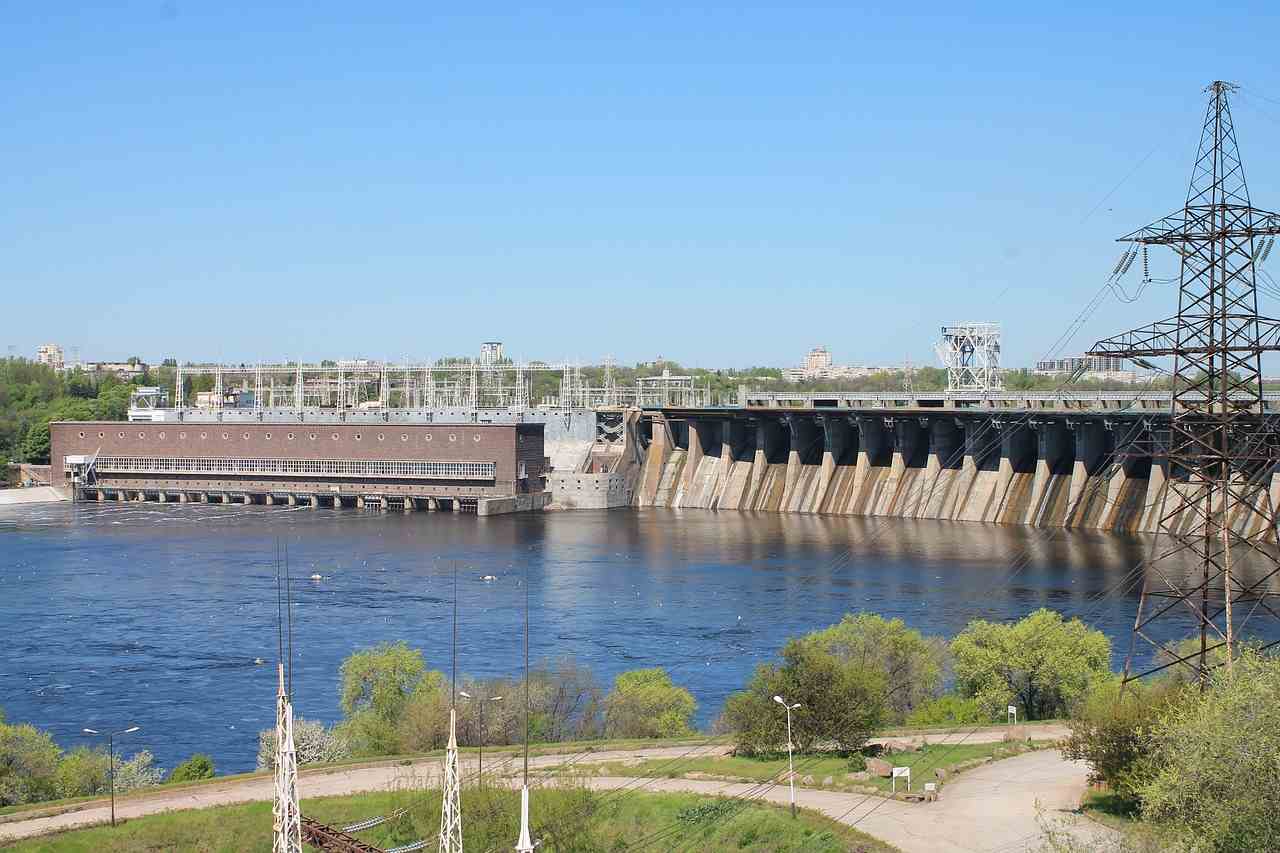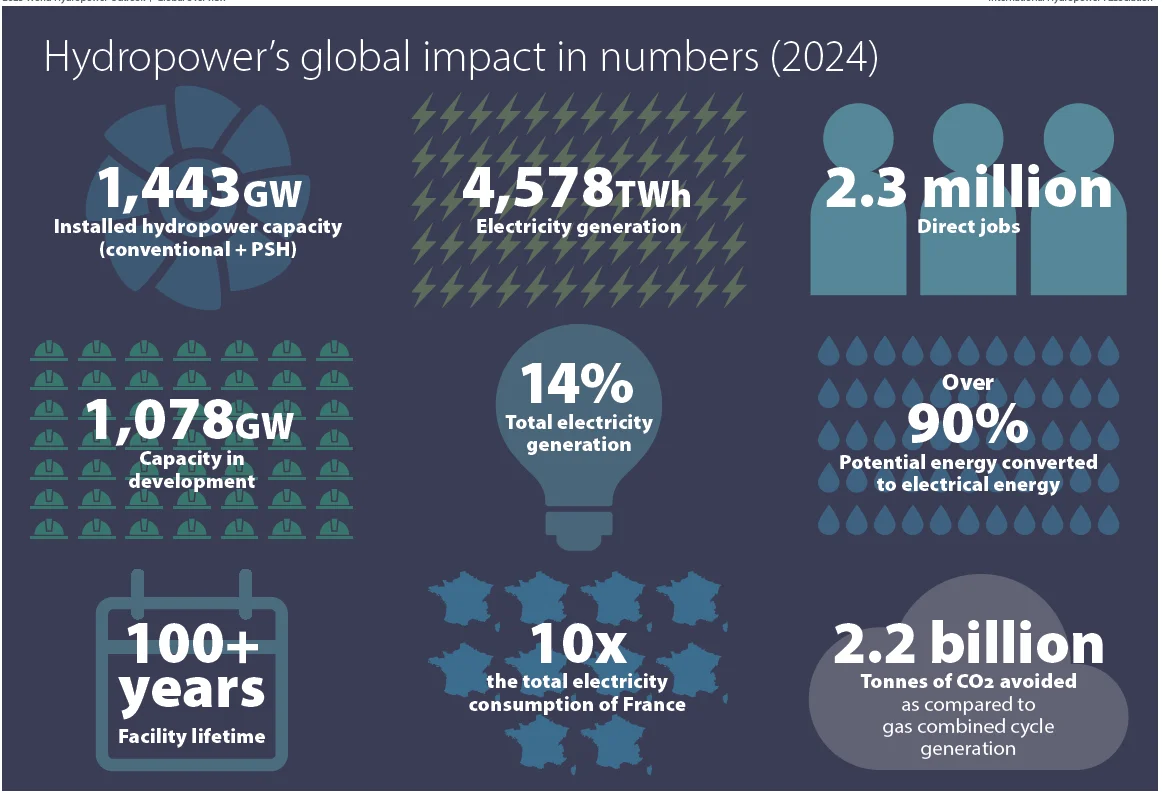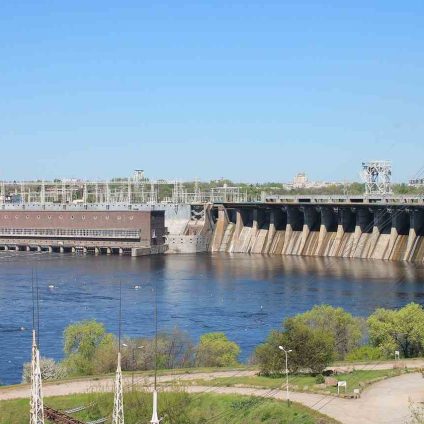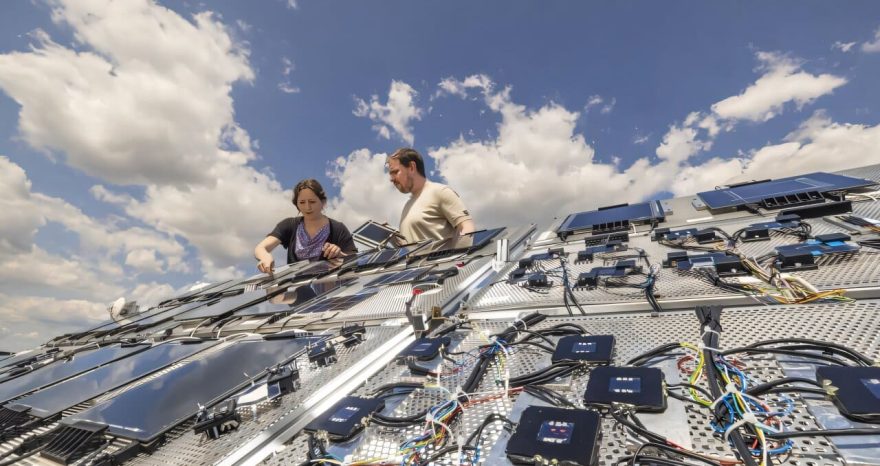In 2024, hydropower generation saw a strong rebound, reaching 4,578 TWh globally, a 10% increase compared to the previous year.

World Hydropower Outlook 2025 highlights global gains in capacity and pumped storage
More than 4,578 TWh of electricity were generated worldwide in a single year by hydropower plants. The figure comes from the newly released World Hydropower Outlook 2025 by the International Hydropower Association (IHA). The report outlines how the sector is evolving and its increasing relevance in future energy systems, especially due to the rapid growth of pumped storage hydropower (PSH).
Capacity and flexibility on the rise
In 2024, global hydropower capacity grew by 24.6 GW, including 16.2 GW from conventional plants and 8.4 GW from pumped storage systems. The total installed PSH capacity reached 189 GW, marking a 5% increase in just one year. This trend shows a significant acceleration: the five-year average of new PSH installations has jumped from 2–4 GW to 6 GW annually.
The outlook is even more promising. The global pipeline of projects under development has now exceeded 1,075 GW, including around 600 GW in PSH and 475 GW in conventional hydropower. However, the IHA warns that permitting and financing must speed up, as the current trajectory is 60–70 GW short of the target set by the International Renewable Energy Agency (IRENA) under its “tripling renewables” scenario for 2030.
Hydropower’s role in the global energy transition
Hydropower remains the world’s largest renewable energy source, contributing 14.3% of total global electricity generation. Its value goes beyond clean energy. Hydropower provides critical grid services such as flexibility and balancing, which are essential to support growing shares of wind and solar. It also plays a strategic role in climate adaptation through water flow regulation and resource management.
In 2024, hydropower generation helped avoid 2.2 billion metric tons of CO₂ emissions compared to a power system based on combined-cycle gas turbines. The sector currently employs over 2.3 million people and supplies reliable electricity to more than 150 countries.

China and Africa lead hydropower expansion
China maintained its global leadership in 2024 with 14.4 GW of new capacity, including 7.75 GW in PSH. The country aims to exceed 120 GW in pumped storage by 2030. Africa also had a record year, doubling its three-year average with 4.5 GW of newly commissioned hydropower. The continent currently utilizes only 11% of its estimated 600 GW potential.
Notable projects like the Grand Ethiopian Renaissance Dam, the Julius Nyerere power plant in Tanzania, and Uganda’s Karuma plant have entered operation or expanded output. However, financing remains a key challenge.
Europe also saw strong hydropower output in 2024, reaching 680 TWh thanks to abundant rainfall. In several EU countries, renewables including hydropower, wind, and solar outpaced fossil fuels for extended periods. Interest in storage is also rising, with a 52.9 GW PSH pipeline under development across Europe, including 3 GW under construction and 6.7 GW already approved.
Climate impact and aging infrastructure pose new challenges
Despite recent growth, the sector faces significant challenges. Climate change is affecting water availability, while artificial reservoirs are under scrutiny for greenhouse gas emissions. Aging infrastructure is another concern: over 40% of the world’s hydropower plants are more than 40 years old. Upgrades to turbines, reservoirs, and control systems are increasingly needed to improve performance and adapt to greater variability.
To encourage investment, the IHA recommends long-term flexibility compensation mechanisms, including capacity contracts and dedicated reserve markets. Streamlined permitting, clear regulatory frameworks for PSH, and targeted policy support will be essential to unlock untapped potential.













